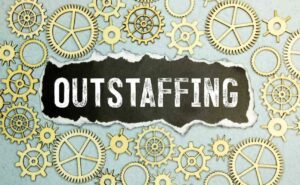In 1913, engineer Ford Whitman Harris developed what became known as the economic order quantity (EOQ) model, a paper-based manufacturing system for production scheduling. Toolmaker Black and Decker changed the game in 1964 when it became the first company to adopt a material requirements planning (MRP) solution that combined EOQ concepts with a mainframe computer. To eliminate unnecessary processes and centralize work, they chose the Oracle NetSuite ERP system. Immediately, Fulton & Rourk was better able to identify accounting errors related to inventory, eliminate costs from employing third parties to evaluate their financial records, and better report financial positions. Also, menial and manual tasks are eliminated, allowing employees to allocate their time to more meaningful work. Then, the hosting company loads the applications onto the server the client is renting, and both parties begin working to integrate the client’s processes and data into the platform.
Some notable features include scheduled reporting, visualization tools, customizable dashboards, and real-time data access. Using enterprise software to perform tasks and achieve set goals leads to an increase in productivity. Workers get to concentrate on important work while these enterprise software tools handle low-value and time-wasting tasks.
Why You Can Trust Forbes Advisor Small Business
Specifically, it enables users to access data faster, and it helps IT organizations efficiently streamline data integration and services. Sage is one of the leading providers in the industry with a Capterra rating of 4.1 stars and 4.3 on G2Crowd. Whether your enterprise needs keyword tracking, monitoring or link analytics, Moz is designed to bring all SEO and inbound data under one roof. With features such as site audits, rank tracking, backlink analysis and keyword research, this enterprise application software takes care of all your enterprise SEO and inbound efforts. The online data for hundreds of locations are easily managed via their enterprise solution, including listings, reviews, and store locators. Additionally, they offer free educational materials that can upscale any project and ensure your websites are ranking.
- We will also consider Capterra and G2Crowd ratings as two of the leading websites for verified software reviews that can provide you with additional information.
- You can also integrate your survey data into more than 80 external apps such as Salesforce, Marketo or Oracle Marketing Cloud.
- ERP is especially popular in manufacturing and production-based fields, but it is now used in areas as wide-ranging as healthcare, e-commerce and nonprofit work.
- Arena PLM is one of the best product lifecycle management software tools designed to handle today’s modern product development challenges.
- Enterprise Resource Planning is a type of software tool used by an organization to plan and manage day-to-day activities.
With Adobe Marketo Engage, you can nurture your business leads and prospects across multiple channels. Use its AI-based predictive audiences and rich behavioral data to best engage your customers and improve their customer experience. Human resources management is the process of recruiting, hiring and managing people within an organization.
Information Integration
Infor SCM is an end-to-end supply chain solution that provides companies with real-time supply chain visibility for making data-driven decisions. Supply chain management is the management of the movement of goods and services examples of enterprise systems from the point of raw materials to production to consumption by the consumer. Enterprise asset management is the maintenance and control of physical assets of an organization throughout the life cycle of each asset.

You can use accounting software to streamline your accounting processes, automate financial management, and get accurate and error-free records. This module keeps track of the organization’s finances and helps automate tasks related to billing tasks, account reconciliation, vendor payments, and others. Its key features include tracking accounts payable (AP) and accounts receivable (AR) and managing the general ledger.
Simplifying IT processes
Other noteworthy features include the ability to fulfill customers’ orders efficiently through real-time data and predict stock replenishment. With this feature, enterprises can connect their banks across the globe and enjoy bank reporting and online payments integration to automate work manually and connect with their banks in real-time. Enterprise can use Gantt charts and other view opinions to visualize project tasks, goals, and progress at a glance. Enterprise project management tools are easily customizable, allowing you to view your projects from different angles. On the other hand, an enterprise-level business with many employees also operates global supply chains, resulting in these organizations relying largely on dynamic technologies to handle large workflows.

Most have heard the term “enterprise system” but do not have a precise idea of how exactly such systems are integrated into organizations and what functions they are designed to perform. In this article, we will tell what exactly the enterprise system is, how it can help businesses, present its major types and their key features. Corporations require them to collect, process, and interpret a vast amount of data, tying together lots of business processes and enabling the flow of data between units to run operations efficiently.
Learn How NetSuite Can Streamline Your Business
Ultimately, by addressing their integration needs, teams become empowered to devise, implement and streamline multiple integration solutions by leveraging a common approach for collaboration and information exchange. With access to these new technologies, organizations can quickly improve their business best practices as the ERP software evolves. They can automate processes that used to require heavy manual intervention, such as reconciling financial accounts.

Successful enterprise integration demands an agile and scalable integration strategy. Some vendors offer a guided approach to the design and execution of this type of strategy – driven by an Integration Center of Excellence. The SAP Integration Solution Advisory Methodology, for example, is built right into SAP Integration Suite and is based on proven best practices and an in-dept knowledge of the technology. There are a number of different types of integration connecting critical systems, processes, data, and applications across all lines of business within an organization. Successful digital transformation strategies often require connecting legacy systems with newer cloud technologies.
Best for Role-Based Solutions
Rather than having separate data collection and management programs for each department—one for sales, one for inventory management, another for production, and so on—an ERP system provides a single hub for it all. Microsoft Dynamics 365 Business Central is a robust ERP system that helps small businesses organize their sales, service, operations and finance functions so they can achieve faster, better results. You can use it to register shipped goods and store details in one place automatically, assign employees to certain work orders and move items between locations easily. She loves to perform in-depth software reviews to help software buyers make informed decisions when choosing project management software, CRM tools, website builders, and everything around growing a startup business. Since the cloud services are fully managed, it helps to remove time-consuming and expensive administrative tasks, like managing servers and scaling infrastructures. With these tools, enterprise-level project and marketing teams can easily collaborate on important issues irrespective of where they are in the world and achieve their goals seamlessly.
With its product lifecycle management (PLM) tool, you can integrate ERP, CRM, and LIMS business systems. UpKeep is a cloud-based asset management solution that helps to track, maintain and organize projects, assets, inventory, and others. With a user-friendly and easy-to-use dashboard, Tableau is simple and direct to use. You can use its data connectors to connect to and effectively optimize multiple data sources including big data. With this software tool, you close your accounting books on time, generate accurate reports, and enjoy more control over your financial assets. You can integrate NetSuite cloud accounting software with other systems such as CRM and ERP.
Supply Chain Management (SCM)
This kind of software obviously requires interdisciplinary methods and processes to manage large data scales – numerous solutions on the market provide just that. For example, an enterprise application focused on human resources will have numerous HR features that will enable professionals to access one single solution and generate information simultaneously. This is not only important for small businesses but enterprises are even more pressured to acquire the best possible data management processes and tools to ensure stable development. Streamlining large-scale data requires large-scale software and, in this article, you will find out everything you need to know – from the best BI tools on the market to project management and web analytics software.